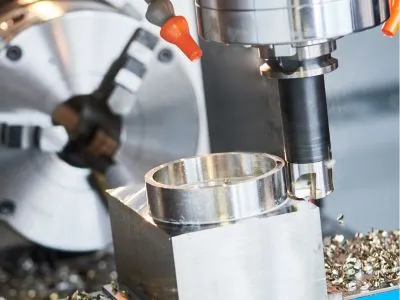CNC machining is a precise and automated method that uses computer-controlled tools to shape raw materials into finished parts. It’s widely used in mass production due to its accuracy, consistency, and ability to create high-quality components. The process starts with a digital design, which is then translated into machine instructions through CAD software. This ensures that every part produced is identical, making it ideal for large-scale manufacturing. On the other hand, prototyping focuses on creating early versions of a product to test functionality, design, and performance before full-scale production. Prototypes allow designers and engineers to identify flaws, make adjustments, and refine their ideas. This stage is crucial for innovation, especially when developing new products or improving existing ones. Although CNC machining can be used for prototyping, the two approaches differ in scope and purpose. Prototyping is more about iteration and testing, while machining is about precision and volume. Choosing between them depends on your project's needs, such as quantity, timeline, budget, and desired quality. CNC prototyping is an efficient way to create one-off models or small batches using computer-controlled machines. It allows for rapid development and helps detect design issues early in the process. By using materials like metal, plastic, or composite, prototypes can be tested under real-world conditions before moving to mass production. This method is especially useful for startups, product developers, and engineers who need to validate their designs quickly. It supports various operations such as drilling, milling, turning, and grinding, making it versatile for different industries. CNC machining refers to the use of automated machinery to produce parts with high precision and efficiency. Unlike traditional manual methods, CNC machines follow digital instructions to cut, shape, and finish components. This reduces human error and increases productivity, especially for complex or repetitive tasks. The process begins with a 3D model created in CAD software. The design is then converted into a code (G-code) that guides the machine’s movements. Before full production, operators often run simulations or test the code to ensure accuracy and avoid costly mistakes. If you're working on a new product and need to test its design, prototyping is the right choice. It offers flexibility, speed, and cost-effectiveness for small quantities. However, if you’re looking for high-quality, repeatable results at scale, CNC machining is the better option. Both methods have their advantages, and sometimes the best approach is to combine them. Start with prototyping to refine your design, then switch to CNC machining for final production. At Cheetah Precision, we specialize in high-precision CNC machining and prototyping services. Our expertise includes 5-axis, vertical, and horizontal CNC milling, lathe turning, and Swiss machining. We cater to a wide range of industries, from aerospace to medical devices, ensuring top-quality results every time. Whether you need a single prototype or a large batch of custom parts, our team is here to support you. Contact us today to get a free quote and take the next step in your manufacturing journey. Seawater Desalination System,Pure Water Treatment System,Pure Water Making System,Pure Water Purification System Foshan Hongjun Water Treatment Equipment Co. Ltd , https://www.hjwastewatertreatment.com CNC machining and prototyping are both essential processes in modern manufacturing. While they often overlap, they serve different purposes and play unique roles in the production cycle.
CNC machining and prototyping are both essential processes in modern manufacturing. While they often overlap, they serve different purposes and play unique roles in the production cycle.What is CNC Prototyping?
What is CNC Machining?
Which One Should You Choose?
Cheetah Precision Can Help With Your Machining and Prototyping Needs
Prototyping vs Machining
Seawater Desalination System,Pure Water Treatment System,Pure Water Making System,Pure Water Purification System Foshan Hongjun Water Treatment Equipment Co. Ltd , https://www.hjwastewatertreatment.com